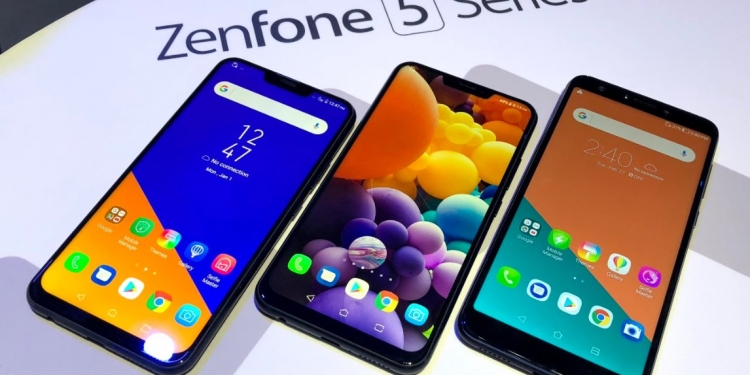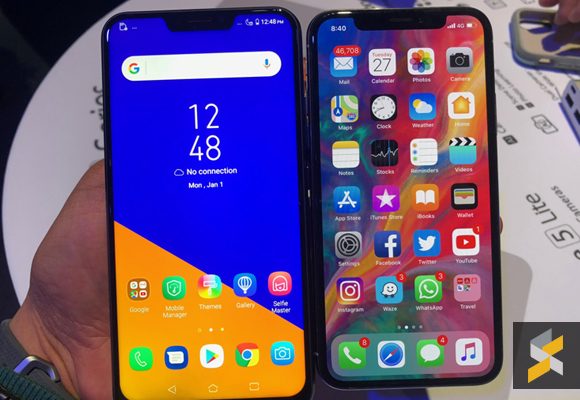Asus kicked off its year with a big party at Mobile World Congress 2018 announcing three new phones, the ZenFone Lite, the ZenFone 5 and the flagship ZenFone 5Z. We’ll talk about the ZenFone Lite in a later post, for now I want to concentrate on the two more interesting models – the ZenFone 5 and ZenFone 5z.
The ZenFone 5 is the most intelligent smartphone Asus has ever made, or so they claim. The device was introduced with a range of what Asus claim is AI technology enhancing seven key performance aspects of the device – AI Display, AI Camera, AI Ringtone, AI Gallery, AI Charging, AI Boost, AI Photo Learning.
Before we go into details on the what these AI enhancements do, let’s talk about the specs of the ZenFone 5.
The Spec

On the inside the ZenFone 5 is powered by Qualcomm’s reliable mid-range chipset, the Snapdragon 636, the same chipset as the one used in the Redmi Note 5 Pro. So you can be assured of reliable and snappy performance. There will be two versions, a 4GB RAM version and a 6GB RAM version, both with 64GB of built-in storage. Wrapping things up is a 3,300mAh battery – which considering the specs is rather small for my liking but…it will be interesting to see how the new ZenUI 5 OS optimises battery life and performance with all its built-in AI capabilities which, incidentally looks very similar to Huawei’s AI-driven OS.
At the front, you get a 6.2-inch FHD+ (2246×1080) Super IPS display with a 19:9 aspect ratio and a pro-grade DCI-P3 colour space, for vivid and accurate colour. The 19:9 screen ratio means you can view 18:9 content in landscape full screen on the ZenFone 5 without the footage being cropped.
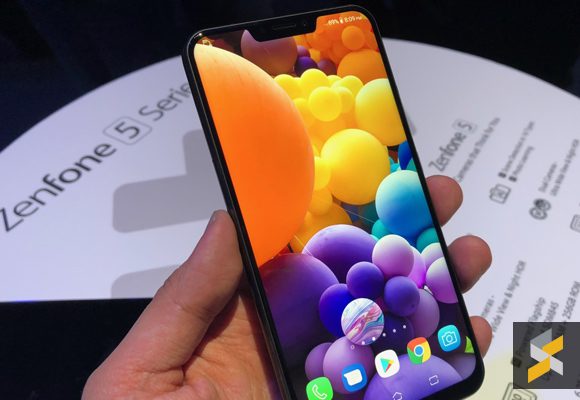
The display has the largest ever screen-to-body ratio on an Asus phone. The large screen and small body combo mean that the Asus designers had to incorporate a notch in the ZenFone 5 similar to the iPhone X. However, Asus claims that the notch on the ZenFone 5 is 26% smaller than the one on the iPhone X. On the same token, the iPhone X has a 5.8-inch display with a 86% screen-to-body ratio compared to the 6.2-inch, 90% screen-to-body ratio of the ZenFone 5.
Animoji like the iPhone X

Not to be outdone with the Animoji feature on the iPhone X, the ZenFone 5 too has something similar called ZeniMoji. It works in very much the same way the Apple’s Animoji but with one big difference, you can share your animated emoji across your social media platform though, to be honest, I don’t see much of point with such a feature whether it’s on the iPhone X on the ZenFone 5. I hardly use Animoji on my iPhone and when I do, it’s just to show off what the iPhone can do instead of actually sending someone an animated emoji.
Wide-Angle Camera
On the rear of the ZenFone 5 has a 120 degree wide-angle dual-camera array that utilises the latest top-of-the-line 12MP Sony IMX 363 imaging sensor with 1.4 micron pixel size and 4-axis optical image stabilisation and a f/1.8 aperture lens. If the cameras in past ZenFones are anything to go by, don’t be deceived by the impressive hardware. Asus phones generally are not as good as the competition when it comes to image processing and colour reproduction. Hopefully, with the many new AI features built into the ZenFone 5, we will be able to see improvements in a generally good smartphone package. And there’s also a fingerprint scanner located at the back of the phone. In terms of biometrics, there’s face unlock too.

Speaking about AI and camera let’s talk a bit about the AI Camera mode in the ZenFone 5. AI Camera means the camera in the ZenFone 5 can automatically adjust its settings to suit the lighting and shooting conditions that you’re in. There are 16 different scenes and subject detection mode in which the AI system can choose from.
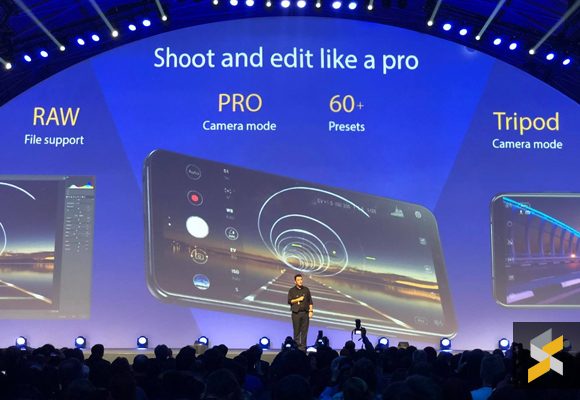
You also get Pro Mode with over 60 presets to fiddle around with if that’s your thing. You have the option to shoot in RAW if you want to as well and there’s a Tripod mode for when you’re using a tripod to take pictures with the ZenFone 5.
AI Photo Learning, learns your camera preferences, knows when you use those preferences and for what shots. The system then automatically suggests the right preference based on your liking when you’re taking a particular shot.
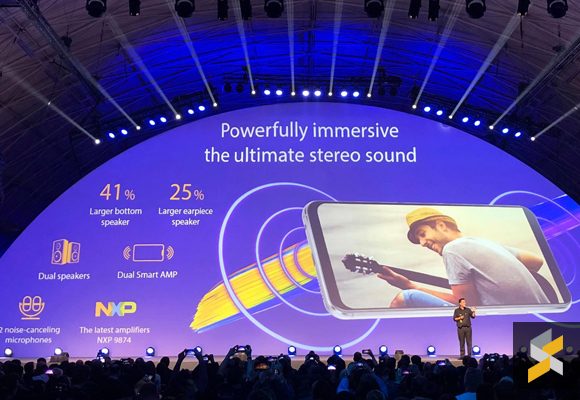
The ZenFone 5 has stereo speakers with the bottom speaker being 41% larger the previous ZenFones while the earpiece speaker is 25% larger. The speakers are powered with dual smart amp incorporating the latest NXP 9874 amplifier. Asus claims the speakers on the ZenFone 5 are 1.2 louder than those on the iPhone X and deliver 10% less distortion. Also built into the ZenFone 5 are two noise-cancelling microphones.
Another noteworthy mention is that you get ZenEar S earphones right in the box. The earphones support DTS Headphone X support and Hi-Res audio format for better audio quality when you want to enjoy your music. If you like your audio wireless, there’s also support for Qualcomm aptX, the latest Bluetooth 5 standard and DTS headphone X with 7.1 virtual surround sound.
Smart features with AI

Among some of the AI features that I find interesting in the ZenFone 5 is AI Ringtone and AI Charging.
AI Ringtone automatically increases or decreases the ringtone volume of the ZenFone 5 depending on the ambient noise. In a noisy environment, the phone will automatically increase ringtone volume to match. Conversely, in a quiet environment, the ZenFone 5 AI Ringtone feature will reduce its ringtone volume accordingly.
AI Charging prevents over-charging especially when the ZenFone 5 is being charged overnight. The system learns your sleep and wake times and adjusts charging accordingly when you charge the device overnight to prevent over-charging. Example, if you charge your phone before you go to sleep, the ZenFone will up to 80% battery capacity and keep it at 80% while you sleep and then complete the charge to 100% just as you are waking up so to avoid overcharging this also maximises the battery lifespan.
ZenFone 5z

Then we move to the ZenFone 5z. Essentially the ZenFone 5z is identical to the ZenFone 5 except for the processor, RAM and built-in storage. The ZenFone 5z utilises the highest-level Snapdragon 845. The Snapdragon 845 is being used in a number of high-end phones, including the Galaxy S9 and S9+, and Sony XZ2. In terms of RAM, the ZenFone 5z gets up 8GB and 256GB of built-in storage.
And that’s pretty much it. there’s no mention on pricing and Malaysian availability yet but expect the ZenFone 5 to be released sometime in April 2018 while the ZenFone 5z to make its market debut in June this year with an expected price from EUR 479 or about RM2,300 in today’s exchange rate.

